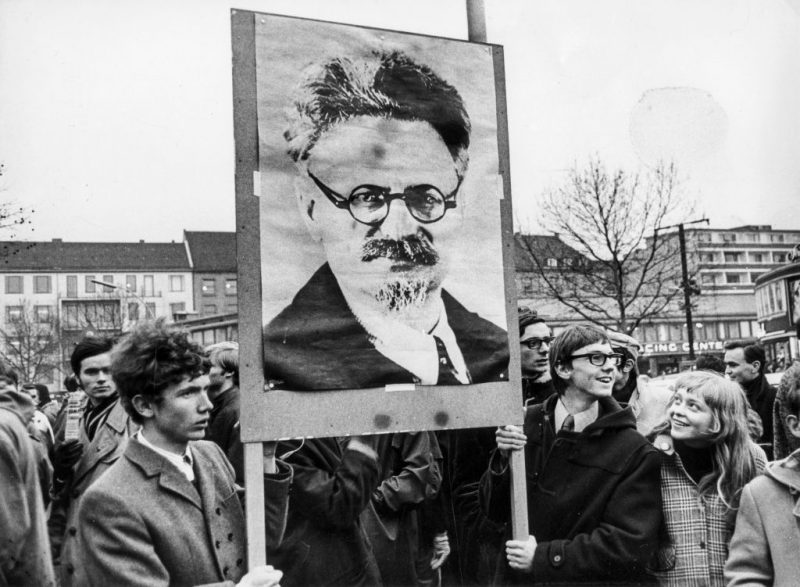.
.
.
With Parliament debating how to avoid future riots getting out of hand, and with a strained weekend expected in London and other main cities, attention has moved on from the knee-jerk ‘get tough’ responses to whether there are practical steps that could by taken to genuinely enhance police capacity. Danielle Moran, Amy Mollett and Chris Gilson look at the three front-runner options in preparing better for future emergencies.
‘Get tough’ calls have dominated the UK’s red top papers for the last week. But all of the solutions being touted – such as using water cannon or rubber bullets, depriving looters of benefits and evicting them from council housing – risk creating far more problems than they might solve. Depriving already poor people of the capacity to live any kind of normal life (as advocated by the always populist Grant Shapps) is highly unlikely to stabilize fraught situations, or reduce crime levels. Using stronger police counter-measures in the red heat of riot situations risks being especially and directly counter-productive at many levels, by escalating the violence used against the police, and by creating greater risks of new grievances that would damage police-community relations far more seriously.
So how can we be sure in future that police capabilities can be quickly boosted to cope with widespread and large-scale looting and vandalism, that is also spatially dispersed and fast-moving – of the kind seen especially in London and Birmingham this week? We look at expanding police reserves, imposing curfews and deploying the army.
Expanding police reserves
In the most recent wave of British army cutbacks, there was a significant re-focusing on boosting the numbers of reservists, mainly provided by the Territorial Army (the TA), whose numbers will increase to 37,000, against a regular army of just 82,000 – a ratio of 1 to 2.2. This option gives more flexibility and capacity to improve force numbers at short notice.
Given that police capacities were stretched to the limit earlier this week by simultaneous riots and looting in many parts of London, could expanding police reserves capacity be similarly effective? At present the police equivalent of the TA is provided by the system of special constables, who have existed since an 1831 Act first created them. Members are unpaid and must volunteer at least four hours per week or 16 hours per month of their spare time. They get a uniform and training, and once fully trained and qualified they can patrol alone, with powers similar to those of regular police. They are mainly used to supplement police activities in areas like foot patrols, tackling anti-social behaviour, house-to-house enquiries and helping safeguard public safety and security at local or major events. In London there are nearly 5,100 special constables against a regular force of over 32,100, a ratio of 1: 6. But comparing borough-level forces (i.e. taking out the central units at Scotland Yard) shows a markedly lower ratio of just 1: 4.
The screening and training of special constables takes a fair amount of time, cost and effort, yet turnover rates amongst special constables are generally quite high (around 15 to 20 per cent per year). In some parts of the country the numbers of special constables have fallen sharply in recent years. For instance, Derbyshire police had 440 specials in early 2008 but less than 300 at the end of 2010, a drop of a third.
In other areas, the use of special constables has grown significantly. In Scotland, the hours worked by special constables grew from 64,000 a year in 1997-8 to three times as many (nearly 213,000) hours in 2006-7, before falling back slightly. Hampshire plan to expand their special constable numbers from 500 to 650 by 2013, a 30 per cent increase.
Special constables were asked to make themselves available for duty in London on the night of Tuesday 9th August as part of a 16,000-man push to secure the capital from rioters. They have been told to be ready for action this weekend also, with some already asked to prepare to be deployed next week too. This week Home Secretary, Theresa May, told the BBC’s Radio 4 World at One that she had ordered all police forces across England and Wales to mobilise special constables in efforts to adopt the ‘tough, robust approach’ seen in London on Tuesday night.
Could the special constabulary be expanded in the light of this week’s events? There is clearly some scope for growing numbers, especially in those areas where they have been allowed to decline. But it might not be all that easy to recruit radically larger numbers of specials in the future, because the time-demands on them are permanent and significant, and because no regular payment or strong incentives are available to encourage more recruitment, unlike army reservists who do get some very modest pay.
What about trying to add a new tier of people who are willing to help out the police not all year through like specials, but just when really needed, in emergency settings such as those occurring this week? The surge of vigilantism in some areas of London and Birmingham this week has shown that many people are anxious to do more to stop riots or looting getting out of hand.
There is some precedent for such extraordinary mobilizations, most notably during wartime and during the 1926 General Strike. At that time the Conservative government adopted the independently established, right-wing Organisation for the Maintenance of Supplies. Formed following an exchange of letters from the public in the Times newspaper, the OMS was always controversial, however – and the Commissioner of the Metropolitan Police (Brigadier-General William Horwood) refused to work with what he considered to be a fascist organisation. The outbreak of a general strike led to the OMS handing over its membership lists, with 100,000 names, to the government and it thus became a state institution for the strike’s duration, again announced in The Times’ letters pages by the Home Secretary of day, William Joynson-Hicks. However, it was quickly disbanded thereafter, and not repeated,
Imposing curfews
After the scenes of rioting, looting, and cat and mouse games across the Pembury Estate in Hackney Central on Monday night, Diane Abbott, MP for Hackney North and Stoke Newington, called for a curfew to be considered in her constituency. Speaking on BBC Breakfast, Abbott said: ‘I’m not saying it is definitely the way forward but it is something we have to consider… We cannot continue to have increasing numbers of looters on the streets night after night.’
In terms of the possibility of a national youth curfew, previous poll results certainly seem to suggest there is public support for this. In July 2008, following fears about the increase in knife crime across England, a YouGov Sunday Times poll showed that nine out of ten parents backed legal restrictions on their children being outside after 9pm. This week, YouGov found that 82 per cent of the public backed curfews, and even a poll of the Guardian readers showed 67% in favour.
Some powers are already on the statute book that make curfews feasible, but strictly for young people aged under 16. The Anti-Social Behaviour Act 2003 gives police officers in England and Wales the power to disperse groups in authorised areas through the creation of dispersal zones. Under Section 38 of the Act:
| If, between the hours of 9pm and 6am, a constable in uniform finds a person in any public place in the relevant locality who he has reasonable grounds for believing–
(a) is under the age of 16, and (b) is not under the effective control of a parent or a responsible person aged 18 or over, he may remove the person to the person’s place of residence unless he has reasonable grounds for believing that the person would, if removed to that place, be likely to suffer significant harm. |
The human rights organisation, Liberty, outlines its objections to youth curfews on its website, including the fact that the implementation of curfews and dispersal zones ‘sweeps up the innocent with the guilty, treating all young people as potential criminals’.
Deploying the army
Bringing in the army or paramilitary police forces to cope with riots is relatively common in many European countries and elsewhere. The French and the Italians have hybrid army/police forces, the Gendarmerie Nationale and the Carabinieri respectively. Argentina’s Gendarmería Nacional operate in a similar fashion, providing frontier and border security as well as policing functions. Spain has the Guardia Civil, which operates as a federal military police force. Most of these organisations operate as a national police force, policing smaller cities too small to have their own dedicated forces, and intervening in urban centres when riots, disorder, or disasters occur. Canada has the Royal Canadian Mounted Police – which operates as a national policing body and has some military features.
However, the UK has never had such hybrid forces, and military deployments are virtually unheard of in the UK mainland. In 1969, British army troops were sent into Northern Ireland to restore order after the Battle of the Bogside. Initially greeted with relief, they quickly formed a new focus for discontents and got stuck in their role long-term, only finally being able to withdraw in 2007. This is a history most Westminster politicians devoutly wish not to repeat.
Tim Montgomerie at Conservative Home called for the army to be brought in and the use of rubber bullets. And Conservative MEP Roger Helmer went further, calling for rioters to be ‘shot on sight’ by the army. But Home Secretary Theresa May has said emphatically that the army will not be brought in
However, if a UK government decide that the police in London or elsewhere were not sufficient to keep public order, Section 22 of the Civil Contingencies Act 2004 seems to indicate that the army could be deployed:
| (1) Emergency regulations may make any provision which the person making the regulations is satisfied is appropriate for the purpose of preventing, controlling or mitigating an aspect or effect of the emergency in respect of which the regulations are made.
… (3) Emergency regulations may make provision of any kind that could be made by Act of Parliament or by the exercise of the Royal Prerogative; in particular regulations may— … (l) enable the Defence Council to authorise the deployment of Her Majesty’s armed forces; (m)ake provision (which may include conferring powers in relation to property) for facilitating any deployment of Her Majesty’s armed forces; |
In this instance the use of the term any provision in 22(1) could well include the deployment of the army.
Please read our comments policy before posting.









1 Comments